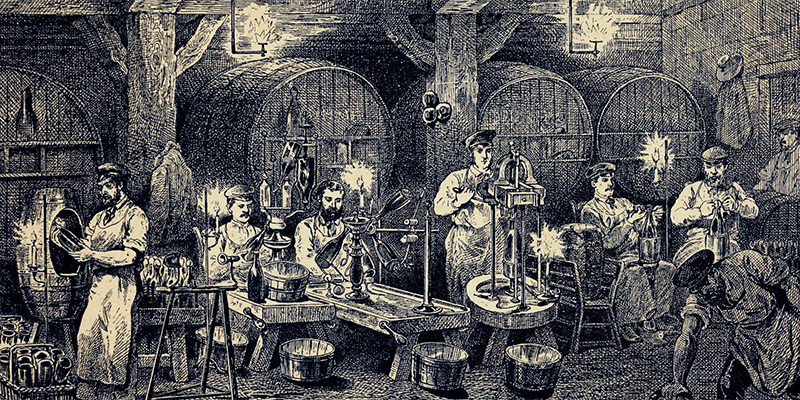While the bubbles are the most exciting part of a sparkling wine — from the classic “pop!” that means refreshment is en route, to the way the bubbles float up in flutes or coupes — it’s the still wine behind the bubbles that makes sparklers so delicious and age-worthy.
Not every wine is fit to sparkle, but the wines that do are classic examples of ugly ducklings transformed into swans. Traditional method sparkling wines — like Champagne, Cava, and American bottlings like Gloria Ferrer — go through two rounds of fermentation. While the second is responsible for the bubbles, the first gives each wine its signature character.
Referred to in the biz as “base wines,” these wines start in the vineyard just like still wines, but that’s where the similarities end. Unlike still Chardonnay or Pinot Noir — the predominant grapes in sparkling wine — berries destined for bubbly are picked extremely early and processed differently than their still counterparts. At Gloria Ferrer Caves and Vineyards in Carneros, that means a harvest as much as a month before neighboring vineyards.
Early picking doesn’t just beat the rush to hire vineyard crews, but ensures that the grapes have higher levels of acidity than those allowed to ripen in August or September. At times blindingly sour, the extra acid in base wines gives sparklers the structure to age for years and the body to remain refreshing after their secondary fermentation. The latter is made possible by the addition of sugar — called dosage — that happens at bottling.
After picking, the grapes are quickly destemmed and pressed very gently, and only a portion of the juice is retained for winemaking. These first juices that emerge from the press have seen little to no contact with grape seeds and stems, leaving the delicate aromas and flavors — think peach candy, fresh lemon, golden apple, and white flowers — pure and untainted by tannins or harsh flavors that add complexity in still wines but are undesirable in bubbly.
With initial fermentation underway, the sugar quickly turns to alcohol, and the grape juice evolves into a tart, dry base wine. At this point, it tastes most similar to dried peaches and crushed Smarties or Sweet Tarts candy. From experience I can tell you it is not pleasant. Gone are the strong, sweet aromas of the grape juice, making it hard to believe these base wines create some truly fantastic California bubbly, or that all methode champenoise sparkling starts this way.
As early wines go from fruit juice to dry, they’re guided along by the deft hands of winemakers like Gloria Ferrer and Steven Urberg. Urberg takes careful notes on up to 30 lots as the wines go dry, noting the fruit flavors and how they evolve, as well as the wine’s pH and temperature, so the base wines can be blended into the perfect pre-bubbly combination.
At first painfully tart and seemingly one-noted, these wines transform during their secondary fermentation to produce juice with serious personality. For example, Gloria Ferrer Blanc de Blancs begins as a careful blend of several Chardonnay base wines, which each contribute flavors like golden apple, lemon, lemon rind, or minerality. Urberg and his team compile each blend from several lots to create the best combination of flavors. Though still extremely sour at this point, winemakers know bubbly is built in the base, and experience (and chemistry) can predict how yeast, dosage and bottle aging will transform acidic base wines into refreshing, rich sparklers synonymous with luxury and celebration. Across classic Champagne houses, this type of precise blending ensures consistency with the house style — the reason Veuve Clicquot or Gloria Ferrer Blanc de Blancs taste similar every year.
It’s this precision in the blending process that makes for great sparkling wine. Once blended, winemakers add a touch of sugar and yeast to kick off the secondary fermentation that adds bubbles and yeasty, rich complexity to sparkling wines. With that addition, the wines are capped and human hands back away. Bubbles form, yeast cells die, and flavors compound for anywhere from two to 10 years.
Unlike with still wines, makers of sparkling wines don’t consistently taste and amend their blends once assembled, and there’s no modifying the blend or topping it up, making perfect assembly of each base wine even more important. Though the glitz and glamor of the bubbles may take over the spotlight, with sparkling wines it’s all about that base.

